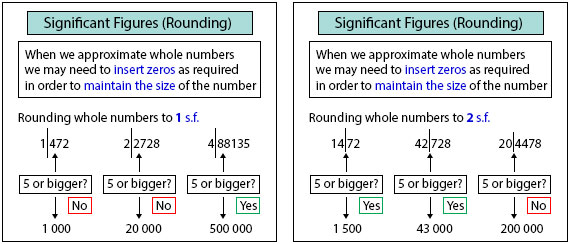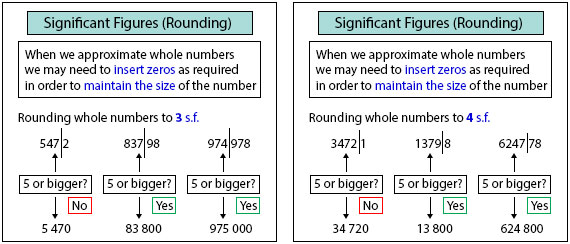APPROXIMATION
CONTENT
- Rounding Off Numbers (Rounding Up and Rounding Down)
- Approximating the Results of Addition and Subtraction
- Approximating the Result of Multiplication and Division
Rounding Off Numbers
Sometimes, when we perform mathematical calculations, the result may give rise to many more digits than is required. We may approximate the result by giving it a smaller number of significant figures or decimal places. This is called rounding off. Rounding off numbers may involve rounding up or rounding down. The last digit to be ignored is usually the clue to rounding up or rounding down the last digit that is kept. If the last digit to be ignored is \(5\) or more, the last digit to be kept is increased by \(1\); if it is less than \(5\), it remains unchanged. In doing this, however, the number that is being rounded off must be close to the original as possible.


Examples:
1. Round off the following to
(i) \(2\) significant figures.
You are viewing an excerpt of this lesson. Subscribing to the subject will give you access to the following:
- NEW: Download the entire term's content in MS Word document format (1-year plan only)
- The complete lesson note and evaluation questions for this topic
- The complete lessons for the subject and class (First Term, Second Term & Third Term)
- Media-rich, interactive and gamified content
- End-of-lesson objective questions with detailed explanations to force mastery of content
- Simulated termly preparatory examination questions
- Discussion boards on all lessons and subjects
- Guaranteed learning